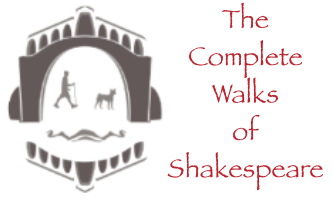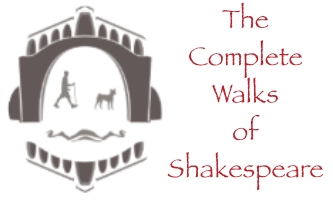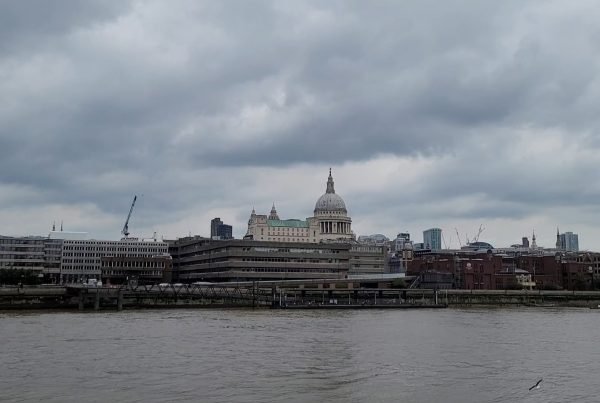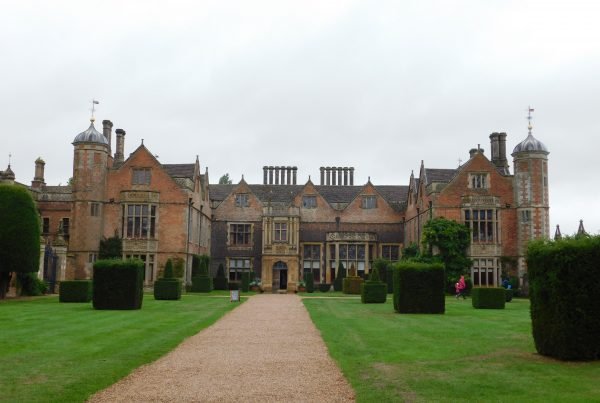King John
Act 1 Sc 1
King John’s Palace
For ere thou canst report I will be there,
The thunder of my cannon shall be heard:
So hence! Be thou the trumpet of our wrath
And sullen presage of your own decay.
-King John
Northampton Station, England
Background - “What is past is prologue”
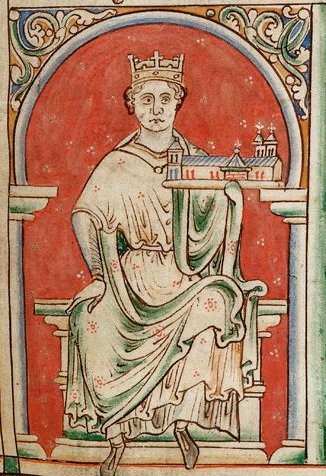
King John holding Beaulieu Abbey. (It was much bigger in real life).
KING JOHN
Written between 1595 and 1597 The life and death of King John is the 13th play in the canon.
Based on the Troublesome Raigne of John King of England by an unknown writer which appeared in 1591, it follows the erratic history of that play rather than that accepted by most historians, and indeed by Holinshed who was certainly a source.
It has, as Eric Morecambe might have said, all the right scenes but not necessarily in the right order.
It tells the story of King John’s war against the French and his subsequent decline in popularity until he dies after being poisoned.
The play covers the period from just after King John’s first coronation which took place in May 1199 until his death in October 1216. Although it might include events that happened seven months after he died….
On the Stage - “The play’s the thing…”

Herbert Beerbohm Tree (1852-1917) as King John. By Charles A Buchel.
1:1 KING JOHN’S PALACE
In the opening scene of the play, Chatillon, the French Ambassador, arrives from France to say his king lays claim to the whole of John’s realm on behalf of John’s nephew Arthur, and if he doesn’t give it up he will wage war upon him.
John tells him he’s more than happy to have a fight and sends him on his way saying he’ll be in France sooner than expected.
John’s mother, Elinor (or Eleanor) of Aquitaine, says the claim is the fault of Arthur’s mother, Constance, who is far too ambitious when it comes to her son and his claim to the throne.
Just then, two brothers are brought in from the Northamptonshire countryside. Both claim they are the rightful inheritors to the estate of their father, Robert of Faulconbridge.
The younger one, Robert, claims his older brother, Bastard, is illegitimate. (The clue could be in the name, I suppose.).
In fact, it turns out that his name is actually Phillip and after some debate and consideration it’s decided he is indeed the illegitimate son of John’s brother Richard the Lionheart, and thus Elinor’s grandson, and his brother is entitled to his inheritance.
John duly knights the older son and the newly dubbed Sir Richard says he’ll follow Elinor to her death. She says she rather hoped he would go there before her but he replies that it’s more polite to let one’s superiors go first.
On the Map - “Presume not that I am the thing I was”

Northampton Station
NORTHAMPTON RAILWAY STATION, NORTHAMPTONSHIRE, ENGLAND
As the Faulconbridge brothers have arrived from the Northamptonshire countryside and Northampton castle was King John’s favourite fortification, it’s understandable why the scene is believed to be set there.
He visited it over 30 times and moved the Royal Mint there in 1208.
Today the site is covered by Northampton Station
And certainly, whoever decided to commission lines from the play being engraved in the station’s paving believed it was set at the town’s castle.
It used to be called Northampton Castle Station, until it was remodelled in 1966, on account of the castle being demolished to make way for it in 1879. Although, to be fair, it was in a pretty poor state even then, having been destroyed by the Royalists at the Restoration to punish the town for siding with the Parliamentarians during the English Civil War. I suppose there’s a certain irony in the castle’s destruction being brought about by a restoration.

Postern Gate
There are still some parts of the castle to be seen, though.
The Postern Gate was removed and reconstructed nearby on Black Lion Hill and the stones of the boundary wall either side of the gate also came from the castle.
Across St Andrew’s Road, just to the north, you can climb up to where the battlements once stood for an uninspiring view over the station car park.
The station that now stands on the site was opened fairly recently in 2015 and gives no indication of the vast construction that once stood where its car park, platforms and ticket hall are now.
There are information boards, it’s true, but inevitably perhaps, nothing to conjure up any sense of its ancient past unless ‘Dark Ages’ could be used as a euphemism for the time one spends waiting for a delayed train.
Before we leave Northamptonshire for now, there are a couple of other connections the county has with Shakespeare that might be worth mentioning.
Thomas Vaux was born at Harrowden Hall near Wellingborough. He was a poet although none of his works appeared in print until after his death in 1556.
By the time Shakespeare was in his prime Vaux’s poems had become extremely popular. One of them, An Aged Lover Renounceth Love, featured the verse “A pickaxe and a spade, and eke a shrouding sheet, a house of clay for to be made for such a guest most meet.”
Shakespeare borrowed it for the clowns to sing a version of as they dig a grave for Ophelia in act 5 sc 1 of Hamlet.
“A pickaxe, and a spade, a spade, for and a shrouding sheet; O, a pit of clay for to be made for such a guest is meet.”
And, although I’ve not been able to corroborate it, I was once told by a BBC journalist that the 1998 film Shakespeare in Love features a dog from Northamptonshire.
